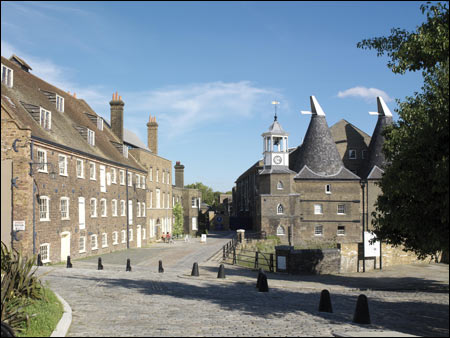Business Culture and Creativity
 Business decisions are driven by aesthetics When I was living in Oxford, I met an American called Michael Black, who is a former MD of the American Stock Exchange. He is now based at Blackfriars, the Dominican house at the University, where he specialises in the study of the theology of business. In conversation with him one day, he told me a surprising thing. When one examines what motivates people to make the business decisions they do, contrary to what most people assume (even those who make the decisions), it is neither pay nor profit that is the primary motivator.
Business decisions are driven by aesthetics When I was living in Oxford, I met an American called Michael Black, who is a former MD of the American Stock Exchange. He is now based at Blackfriars, the Dominican house at the University, where he specialises in the study of the theology of business. In conversation with him one day, he told me a surprising thing. When one examines what motivates people to make the business decisions they do, contrary to what most people assume (even those who make the decisions), it is neither pay nor profit that is the primary motivator.
When he examined actual behaviour and decisions made it suggested something else to him. ‘However, you structure a pay or commission scheme,’ he told me, ‘people act in accordance with the company culture rather than what the commission scheme is motivating them to do. Also you might think, at least for the management within the company, that profit would be the strong motivator; and at one level it is. Except that the way that profit is defined depends upon what is valued, and in practice that varies from company to company. Even standard accounting practices allow for a whole range of definitions of profit.’
If you go to the root of the decision making process, he says, you always find a set of arbitrary assumptions about what the company ought to be doing. Some businessmen may like to think that they act purely by reason, but in fact like everyone else in all walks of life, decisions are made by applying reason to empirically gained information in accordance with assumed principles. What really piqued my interest was Michael’s assertion the choice of starting assumption is at source and aesthetic one; consistent with an innate sense of what is in harmony with the core values of the individual. In other words, whether they are aware of it or not, people choose what they believe to be beautiful.
This means therefore, that an education in beauty is an education in business practice. When we apprehend beauty, we do so intuitively. Therefore, an education that improves our ability to apprehend beauty, as Thomas More College’s Way of Beauty does, develops also our intuition. All creativity is at source an intuitive process so this education develops creativity also.
Beauty like morality is a principle (or perhaps a set of principles) that guides our freely chosen activities, helping us to make good choices. Morality tends to work on a negative basis – it cuts out options that are bad. In contrast, beauty is a principle that operates on a positive basis – it presents new possibilities in the form of new ideas that are in harmony with the common good. Choosing what is beautiful will invoke the principle of 'superabundance'. Superabundance is the creation of wealth out of nothing that Pope Benedict XVI describes in his last encyclical, and which I describe here.
The ‘company culture’ is formed from the aggregate of the values of the people within in. By values I mean what they believe to be good. People flourish within the company when they act in harmony with its culture. And in turn, ultimately, a company will flourish as God intends when its culture is in accord with the common good.
Of course, any culture can be good, or it can be bad. However, Catholics who have a deep understanding of what culture really is (or at least what it ought to be) are in a position therefore, to create a culture that is in harmony with the cult that sustains and perfects all that we do, that is the liturgy of the Church with the Mass at its centre. The Way of Beauty is rooted in the premise that Catholic culture, in its broadest sense, is rooted in liturgy.
The photographs are of a selection of 18th century mill buildings.

